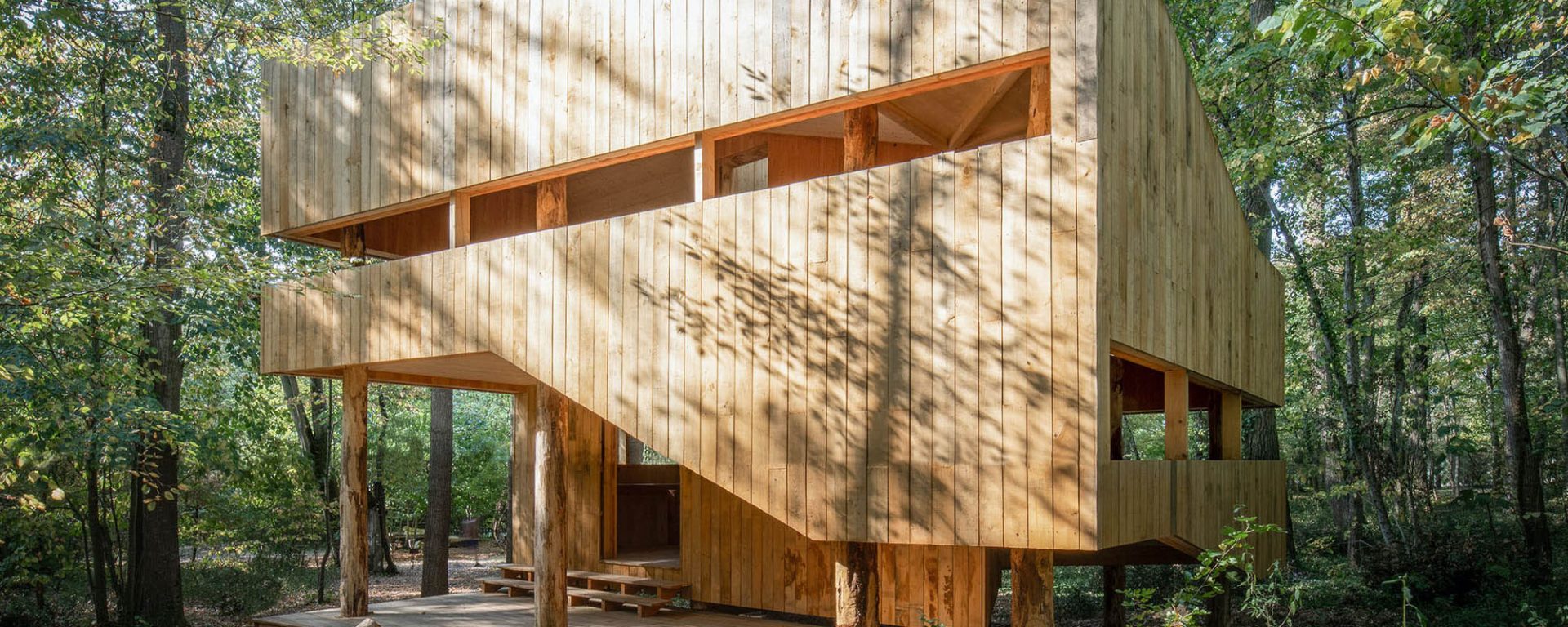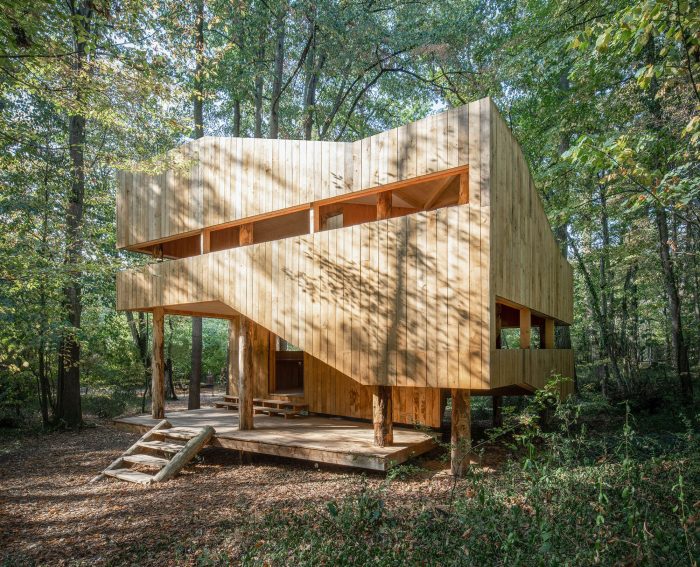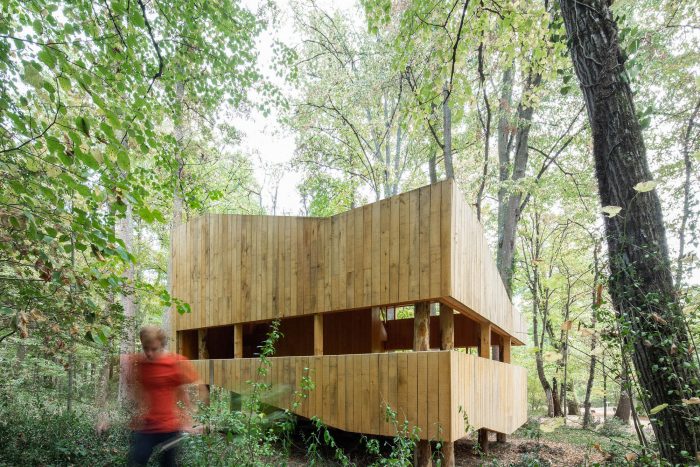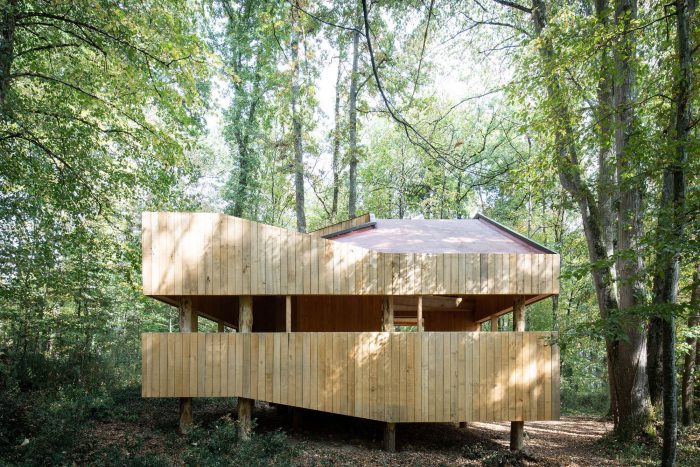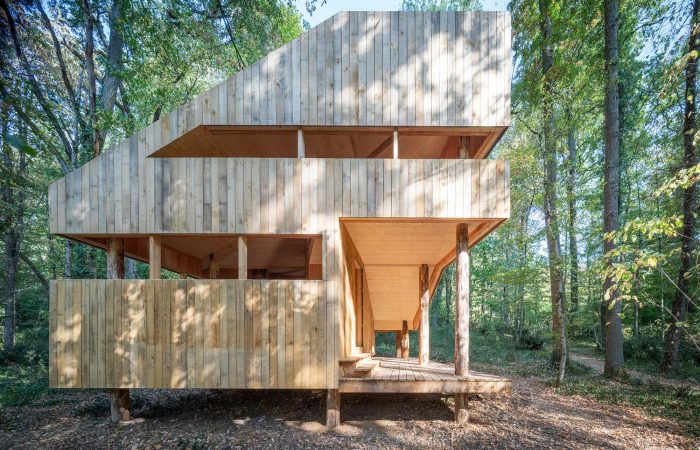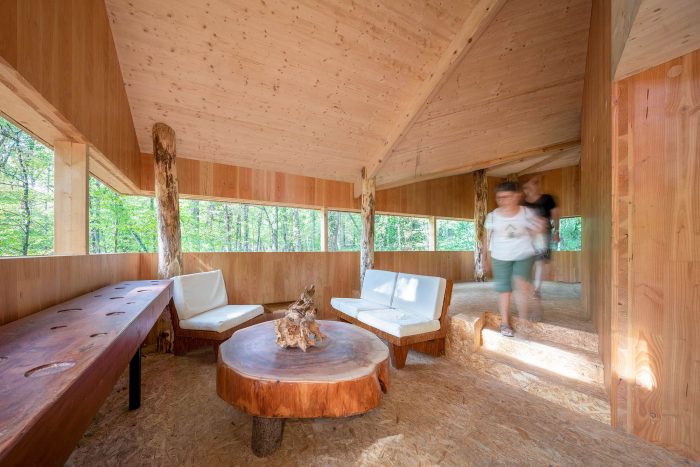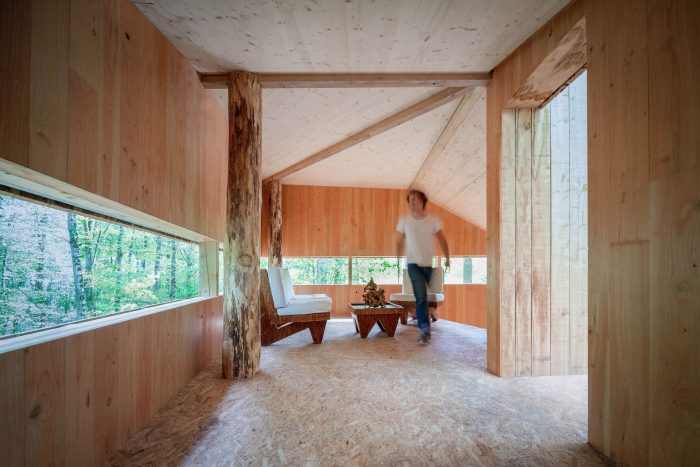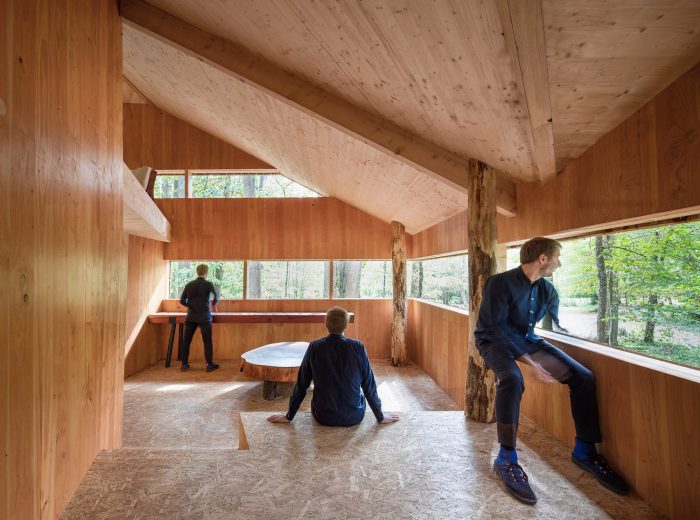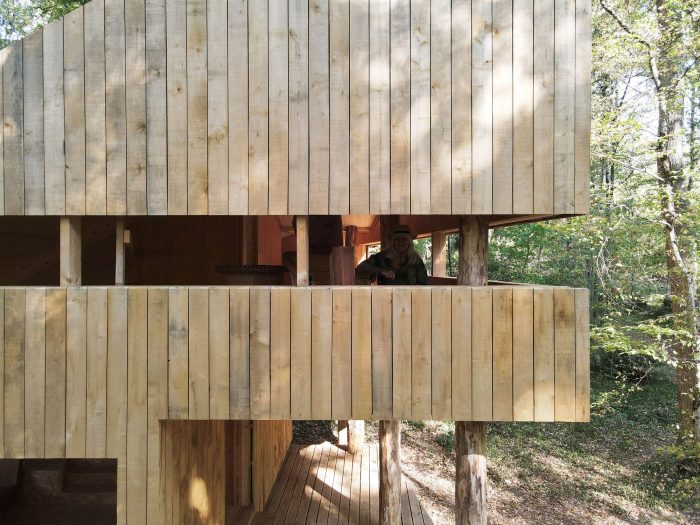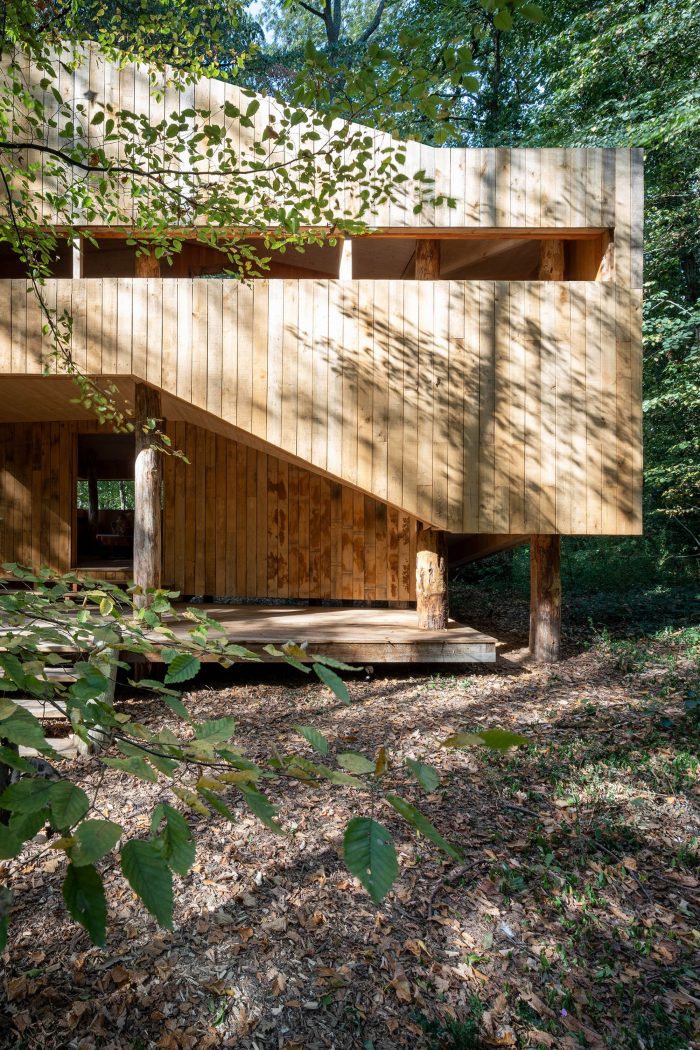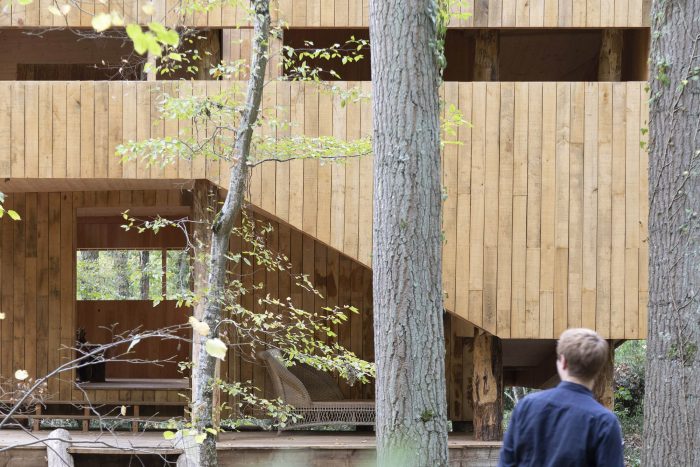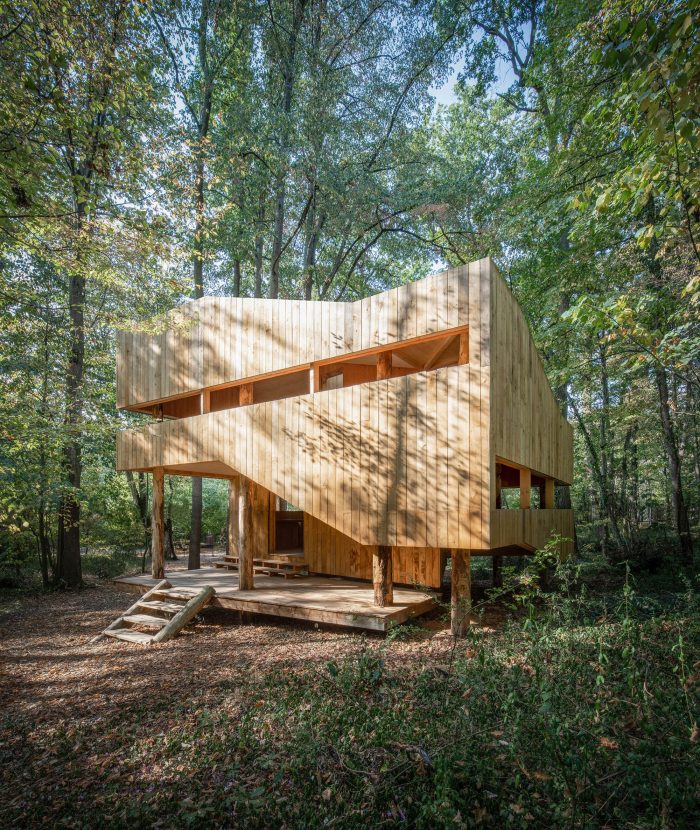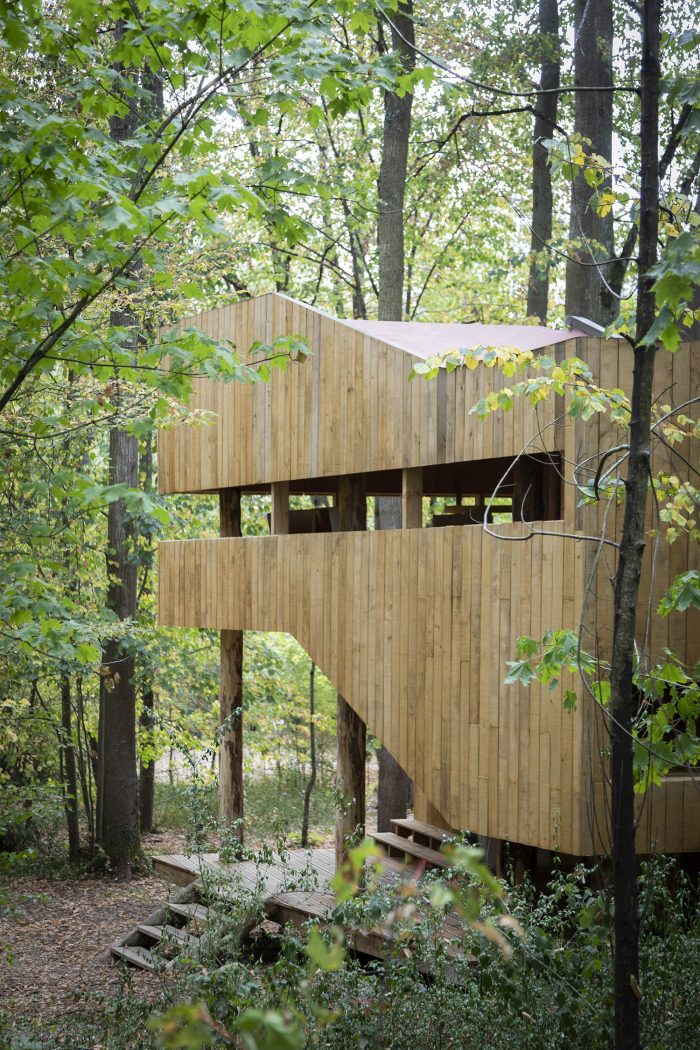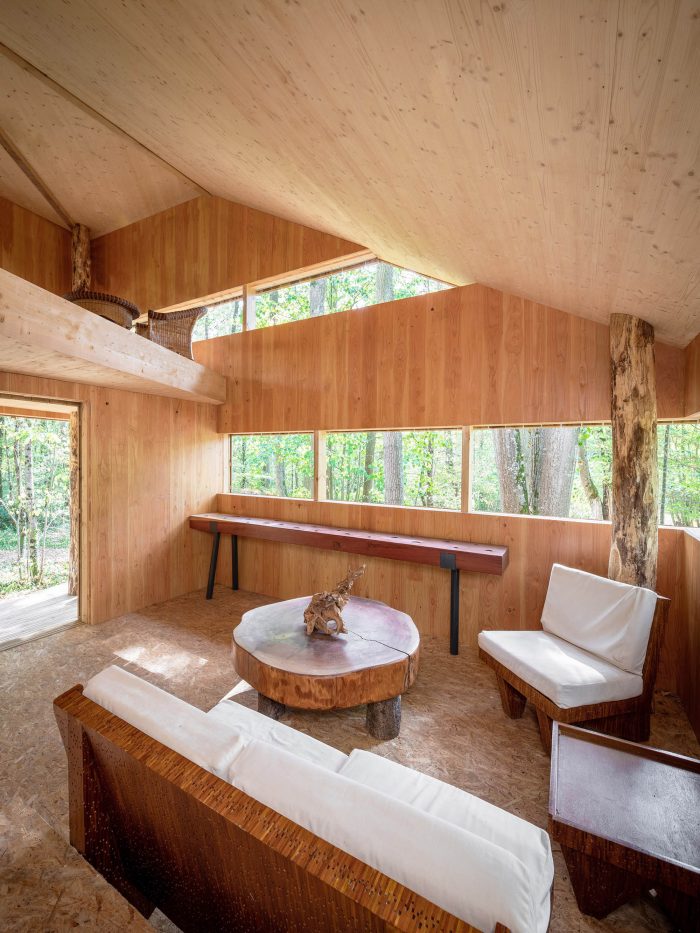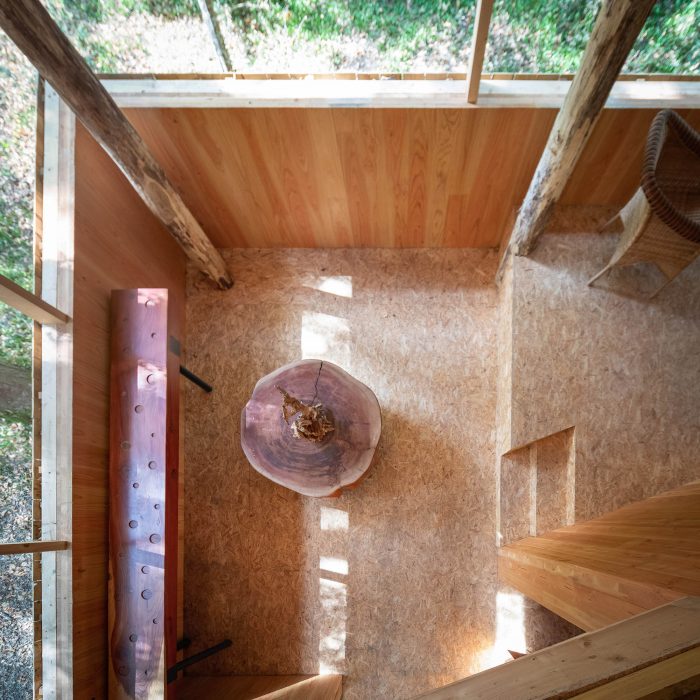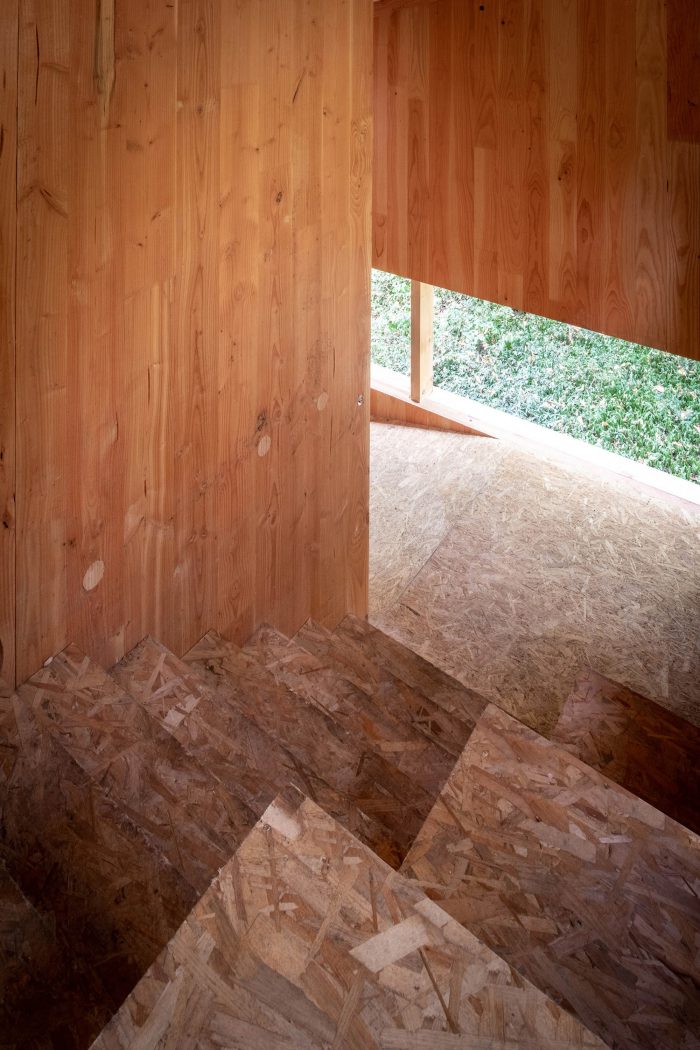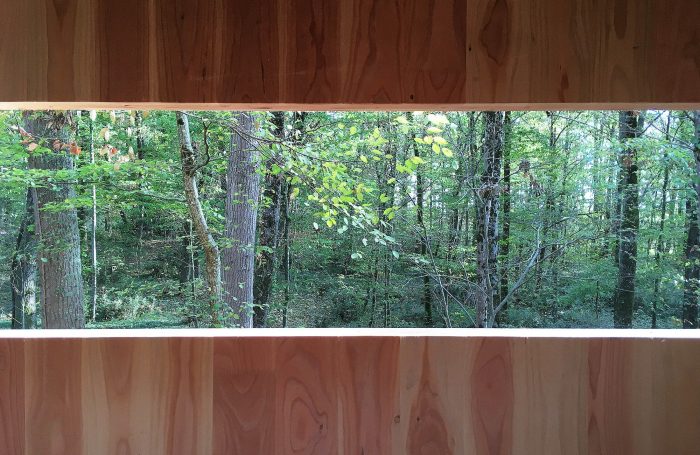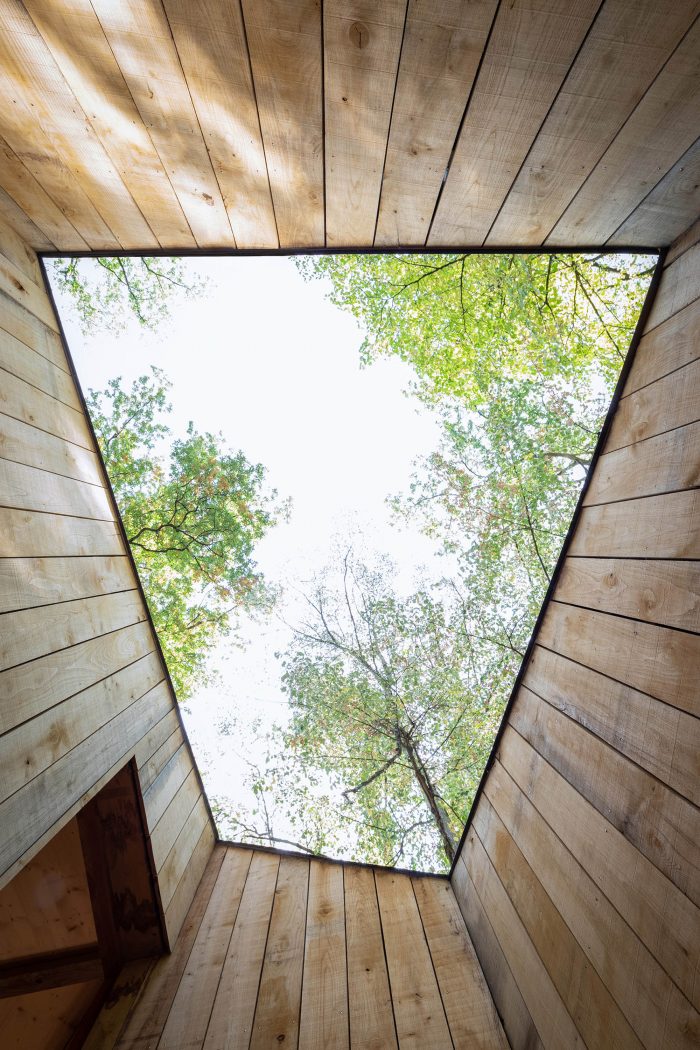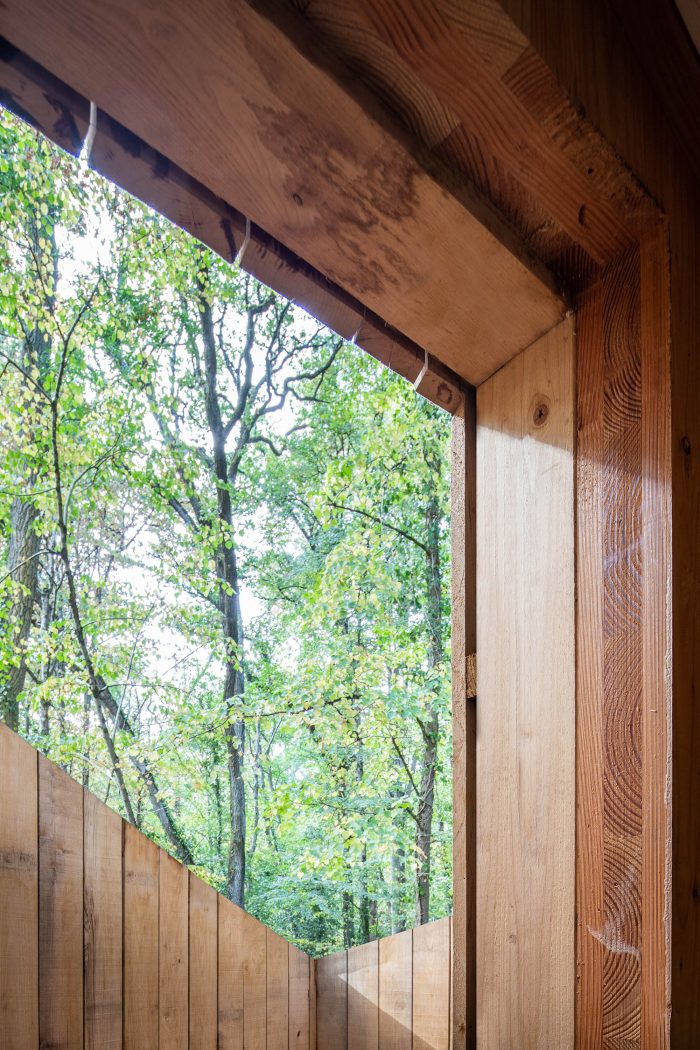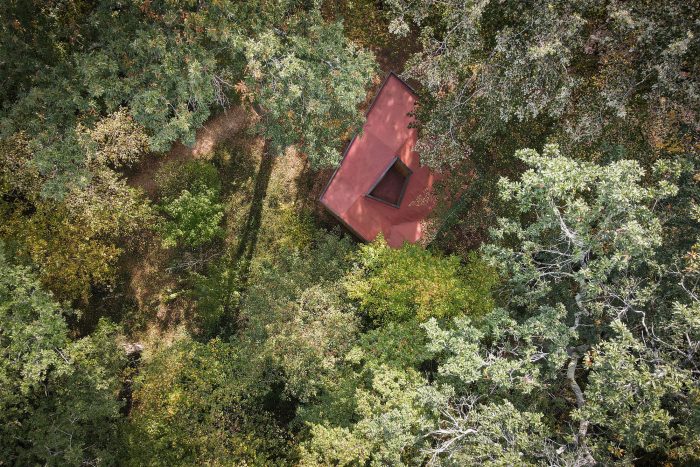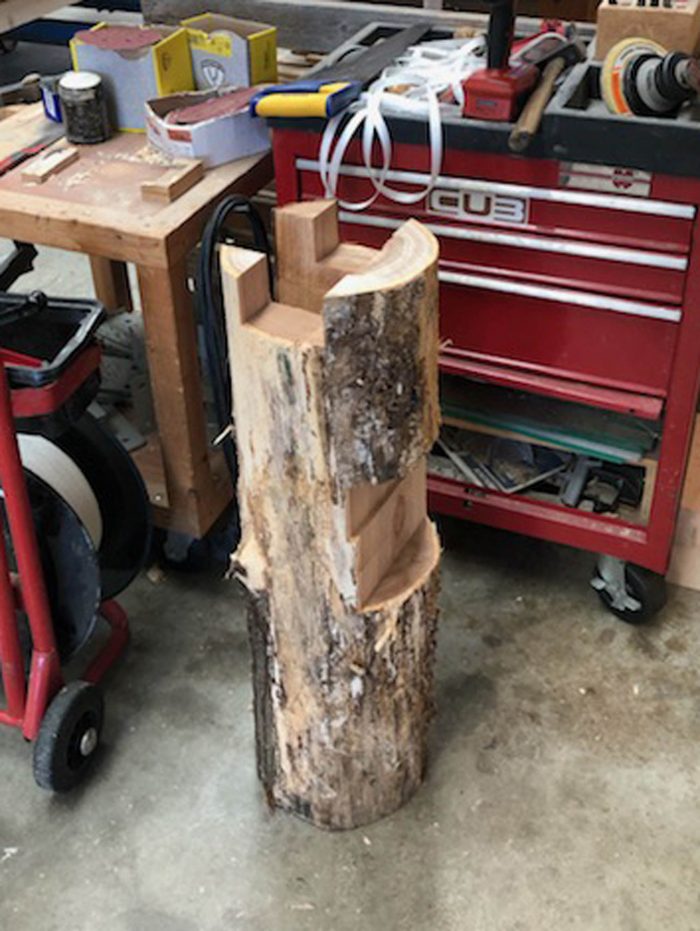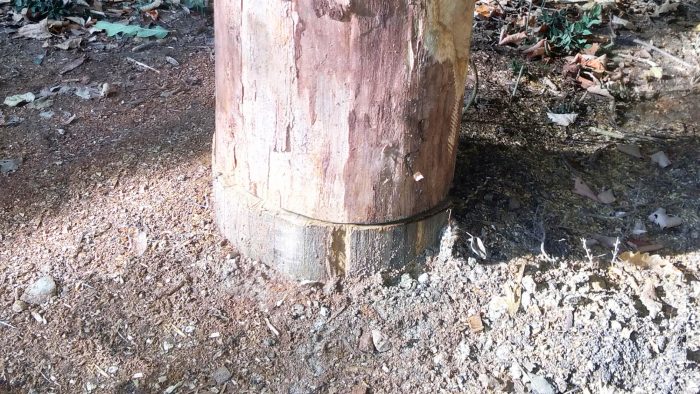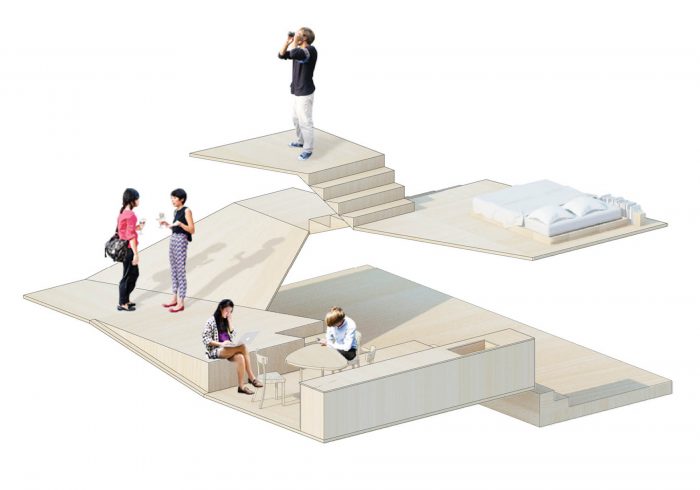这座100%木制房屋是由Bourdaisière城堡(法国)发起的项目征集活动的结果,是第二届森林和木材节(2017年)的一部分。既定的目标是实现一个大约55平方米的房子,有一楼和二楼,只使用木材,供两个人居住。
The 100% wooden house results from a call for projects initiated by the Bourdaisière Castle (France) as part of the second edition of the Forest and Wood Festival (2017). The stated target was to achieve a house of around 55sqm with a ground floor and a first floor, for 2 people, using only wood.
设计过程的基础是面对寻找改变我们生活空间概念的房子的空间质量,以及对木制建筑系统的探索。
The design process was based on confronting a search for spatial qualities of the house that would change our idea of living space and an exploration of wooden construction systems.
通过将房子的程序包裹在一个中央湿芯周围,我们产生了一个巨大的体积印象,双高将生活空间和卧室连接起来。室内地形为不同的用途提供了一个层次:站在厨房面对风景;在客厅的窗户高度上坐着;一个斜坡作为沙发;房间在较高的水平上,以保证其隐私,同时在它下面产生一个有盖的露台。每一个体积的移动都创造了一个新的机会。
By wrapping the programs of the house around a central wet-core, we generate a great impression of volume with a double-height that links the living space with the bedroom. The interior topography gives a hierarchy to the different usage: standing in the kitchen to face the view; seating on the window height in the living room; a slope as a sofa; the room on the higher level to guarantee its privacy while generating a covered terrace below it. Every volumetric move creates a new opportunity.
为了服务于这些雄心壮志,所设置的结构是古代和高科技解决方案的结合。这座房子矗立在洋槐桩上,因为它们具有防水性。用来做柱子的栗子树干直接来自城堡的公园。它们仍然是原始的,并在车间里经过数控加工,然后被简单地嵌入桩中。CLT在立面构成中的使用确保了大的开口和最小的中断,以及使用结构元素作为住宅内部的成品表面。平整的室内空间中的原木让人想起材料的自然来源,并将森林带入房屋。地板和屋顶则是由更经典的木质框架制成。
In order to serve these ambitions, the structures put in place are a combination of archaic and high-tech solutions. The house stands on acacia piles chosen for their water-repellent quality. The chestnut trunks that serve for the columns are coming directly from the park of the castle. They remain raw and have been processed with CNC in a workshop before simply being embedded in the piles. The use of CLT in the composition of the facade ensures large openings with a minimum of interruptions, as well as using a structural element as a finished surface for the interior of the dwelling. The raw logs in the smooth interior space recall the natural origin of the material and bring the forest into the house. The floors and the roof are, for their part, made from a more classic wooden frame.
整个结构已经事先建模,以便生成切割计划,在车间里通过数字切割进行,允许在现场快速组装。和柱子一样,外墙也提供了探索短供应链能力的机会。在公园里存放了几年的栗子树干在离施工现场约10公里的锯木厂被加工成木板,然后被运回安装。在没有经过任何处理的情况下,外墙的颜色将自然演变,并与周围的色调更加接近。
The entire structure has been modeled beforehand in order to generate the cutting plans which were carried out by digital cutting in the workshop, allowing rapid assembly on site. Like the columns, the facade also offered the opportunity to explore the capabilities of the short supply chain. The chestnut trunks stored in the park for several years were processed into planks in a sawmill about ten kilometers away from the construction site before being brought back for installation. Without undergoing any treatment, the color of the facade will naturally evolve and get closer to the surrounding tones.
该项目汇集了技术解决方案,将建筑的起源与当今的高科技产业联系起来。我们正式确定了将居民与他们的建筑环境重新联系起来的雄心。
The project brings together technical solutions that link the origins of construction to today’s high-tech industry. We formalize the ambition to reconnect the inhabitant with their built environment.
Architects: SUPHASIDH, local-eu
Area: 55 m²
Year: 2020
Photographs: Atelier Vincent Hecht
Contractor: Boussiquet, Piveteau, Pavatex, l’André
Design Team:Matthieu Boustany, Benoist Desfonds, Peeraya Suphasidh Studio
Site Architect:Isabelle Poulain
City:Amboise
Country:France

